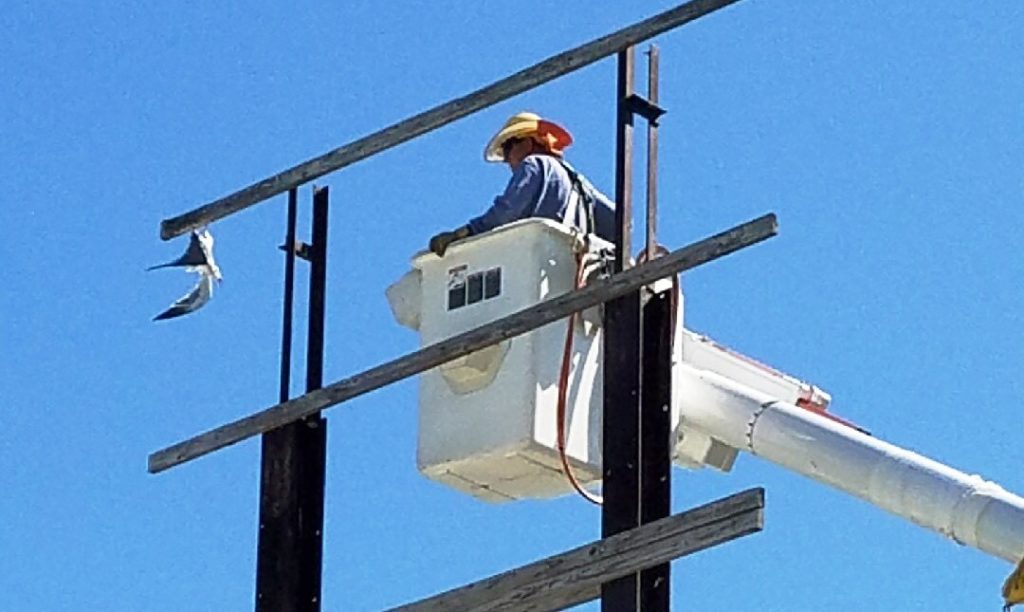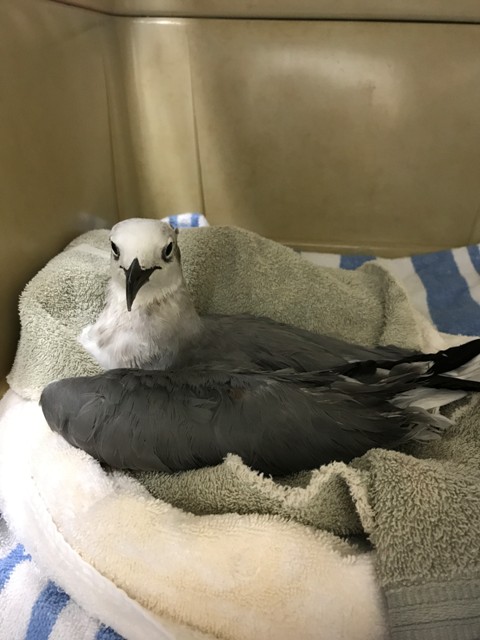
A bird known as a laughing gull was in a bad way.
With vacation traffic whizzing along nearby U.S. 1 in the Florida Keys, the gull’s 1-pound body was dangling from fishing line, hooked around an upright of an empty billboard frame.
“My 5-year-old son saw it first and asked, ‘Dad is that a bat hanging upside down?’ ” said Sergio Lopez, an auto detailer from Kendall, Florida. Lopez and his family were vacationing at a trailer resort beside the highway they visit every year.
“I took Anthony and my 11-year-old daughter, Olivia, over. We saw it fluttering trying to get free,” said Lopez, noting that the exhausted bird would periodically perch on the metal frame to rest. “Olivia prayed through the night that it would survive and it did.”
Lopez contacted the Florida Keys Wild Bird Rehabilitation Center early Aug. 14, and they quickly sent a rescue team to the site.
“They tried with ladders and just couldn’t reach the little guy, so they called us,” said Sara Hamilton, environmental manager of Florida Keys Electric Cooperative. “We dispatched a crew with a bucket truck from our Marathon, Florida, service center to help out.”
That location was closer than the co-op’s Tavernier headquarters, but still 20 miles away from Fiesta Key, or about midway through the 127-mile long island chain.
Jason Heller and Dale Ratza arrived and raised the rig, and as Heller spotted from the ground, Ratza, harnessed to the bucket, reached over and gently grabbed the fluttering, but tired, gull in one hand. He used the other to cut tangled fishing line away from a piece of upright I-beam.

Lopez and his family were all smiles when Ratza brought the bird down. The crew turned the gull over to bird rehabilitation specialists.
“The fishing line wrapped around its ankle caused a lot of constriction and it was pretty swollen,” said Kayla Gainer, chief wildlife rehabilitation specialist. “Had it been hanging up there longer, it could have been a lot worse.”
Gainer said the gull had adult feathers and color and appears to be about 2 years old. Laughing gulls can live for up to 20 years.
“He has been walking around and is still unstable, but that’s generally a great sign.”
The wildlife center staff plans to release the bird soon, so they don’t want to get too attached, but the Lopez family that reported the incident named it “Perchy.” They checked on the bird’s progress several times in the days that followed.
Crews from Florida Keys EC are called on regularly to extend the reach of the two wild bird rehabilitation centers in its service territories. They regularly help with rescue and relocation efforts for ospreys, least terns and other rare, threatened or endangered species, but gulls are among the most common birds in the area.
“We live in a very environmentally sensitive area and we try to keep it pristine,” said the co-op’s Hamilton. “Whether it’s a small gull or an osprey, we help out when we can. Their lives mean something to the environment.”
Derrill Holly is a staff writer at NRECA.